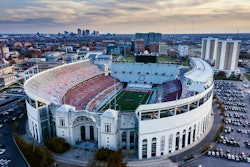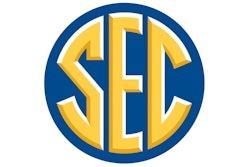Questions Remain Nearly a Year After a College Decides to Drop Athletics

When interviewing last spring for the position of head men's soccer coach at Dean College in Franklin, Mass., Pat Laughlin pointedly asked administrators about the school's commitment to athletics, his take on job security being somewhat jaded by events of the previous three years.
In the summer of 1997, Laughlin, then an assistant coach, had left NCAA Division I Cleveland State University to take over the men's program at Champlain College, a campus of some 2,500 full- and part-time students in Burlington, Vt.
It seemed at the time that he had made a sound decision. Laughlin and his wife were settling comfortably into their new lives in New England, his Champlain teams were steadily improving and he aspired to one day lift men's soccer to the level of sustained success enjoyed by the school's other two intercollegiate athletic programs: men's basketball and women's soccer. He even envisioned a day when all three teams would rise above the National Junior College Athletic Association ranks, based on Champlain's commitment to becoming a four-year institution.
But those hopes collapsed three seasons into Laughlin's tenure, when the college's board of trustees voted in June 2000 to eliminate athletics entirely, effective for each sport at the conclusion of its 2001-02 schedule. Citing data collected from student surveys and other sources, college administrators reasoned that the half-million-dollar athletic budget benefited relatively few at a time when the general student body demanded broader campus recreation opportunities. "I felt we were going to go to a four-year program, whether it was NCAA Division II or Division III or the NAIA," says Laughlin. "But as it went on, the dark clouds were coming in."
Dropping collegiate sports programs is not uncommon in this age of gender equity and greater attention to fiscal responsibility, but even schools not burdened by Title IX or budget constraints are opting to downsize their athletic departments or forgo them all together. Champlain proudly declared that it was the first four-year, private college in the East to place a higher priority on campuswide student recreational needs than on varsity sports. Administrators there had determined that a junior college athletic department just didn't jibe with the school's four-year mission. (The same reasoning was more recently employed by Aquinas College in Nashville, Tenn., which will officially bid farewell to its only two varsity sports - men's basketball and baseball - when the school year concludes next month.)
Still, according to Champlain President Roger Perry, dropping varsity sports at the college was viewed only as a last resort. "The original question was: At what four-year level should we be playing ball." Perry says.
Finding an answer proved difficult. Administrators ruled out the NCAA's Division III, which doesn't allow athletic scholarships, because Champlain, with an annual tuition approaching $20,000, lacks campus sports facilities and would likely struggle to attract talent and remain competitive. Division II would have required the athletic budget to more than double to $1.2 million. Meanwhile, administrators didn't view the NAIA as a "league on the upswing," according to Perry. "Then we just finally asked the questions, 'Why do we have athletics. What are we trying to achieve.' "
To find out, the college commissioned separate research firms to survey current students and some 3,000 high school juniors and seniors on Champlain's prospect list. The surveys asked students to prioritize what they thought the school should offer. "The striking thing that came out is that there just wasn't strong, broad-based support for the varsity sports," says Perry, who came to Champlain as vice president of academics in 1982. "Things like leadership opportunities, fitness workout areas and extracurricular club activities related to major were toward the top of the list."
The data varied little between the school's residents and commuters, Perry adds. Moreover, media coverage devoted to varsity sports was perceived by administrators as having little, if any, positive impact on student recruitment. Says Perry, "No matter how we asked the question or peeled the onion, it kept coming back to the same thing: We're spending an awful lot of money on athletics and it's not getting us the things that we want. Aren't we better off hiring people and going full bore toward the other areas. That's the direction in which we're headed."
That direction includes spending an estimated $11.5 million on a new campus facility that will house recreational spaces, dining areas and student lounges.
It is a direction that has left some individuals close to the issue confused and bitter. Sue Rand, then Champlain's athletic director and women's soccer coach, claims the surveys were biased, and that trustees read more into the research findings than was there. "We have no athletic or recreational facilities on campus whatsoever," she says. "The students felt there was a need for that, and the administration took it one step further and decided that they could sort of play one off the other. The students, while definitely wanting to improve facilities, overwhelmingly felt it was very important and a vital aspect of the college that we continue to have varsity athletics."
Rand, who presided over an athletic department that once offered 14 varsity sports, waged a yearlong battle to save the remaining three, and she clearly was not alone in that fight. More than 100 students attended a public forum held the Monday after Thanksgiving 1999 to voice their opposition to the possibility of dropping athletics. Even the committee assembled late that year by administrators to formally study the issue ultimately recommended that Champlain support varsity sports in addition to expanded recreational opportunities for students. "We've been about having more, not less," says Steve Gentile, a committee member who resigned after 14 years as a college trustee following the decision. "The recommendation was to maintain men's and women's soccer and men's basketball, to go to a four-year plan and to add co-curricular activities."
This, according to the committee, could be accomplished at no additional cost to the college, which hasn't run a budget deficit in more than 25 years.
Why most trustees appeared to ignore the recommendation and eliminate varsity sports is unclear, but Gentile believes trustees simply chose to follow Perry's predetermined agenda, "because the president had been pretty strong on not keeping them."
"It's all a matter of philosophy," Rand says. "It's still a topic of conversation in the area. There are a lot of people who just don't think it makes any sense at all."
Perry, meanwhile, paints a picture of personal detachment. "What we did was generate a lot of data, and the trustees had to chew on it," he says. "They really felt that it was their job, and that's exactly why they're trustees.
"It was an interesting journey - not a pleasant one, but an interesting one."
Meanwhile, the journeys of individuals who held head coaching positions at Champlain have reached divergent destinations. Having landed the job at Dean College, Laughlin continues to coach men's collegiate soccer. "I'm a soccer coach. That's my profession. When Champlain eliminated soccer, I had no choice but to leave," he says. "Fortunately for me, the position opened at Dean College. I was lucky."
Rand made no attempt to remain in athletics - at Champlain or anywhere else. The three-time national women's soccer coach of the year is currently employed by a local firm that coordinates bicycle tours. "The last two years have been really tough in terms of emotion," she says. "For the 18 years that I was at Champlain, I put my heart and soul into that place and the students. It was really tough to go in to work last year when you knew the higher administrators were just doing anything they could to beat you into the ground - for all the wrong reasons."
Perhaps the person in the most unenviable position remains on campus. Captain of the Champlain men's basketball team that went undefeated in 1966, Bob Tipson has served as the program's head coach for the past 33 years, winning nearly two-thirds of his games. He'll coach one more season at the college, in part because he feels obligated to the seven players he hopes return as sophomores.
"I've been here a long time, and if we're going to end it, I'd like to be here at the end," Tipson says. "But I want to do it with our heads held high. I want to walk out the door saying, 'We had a great program, it was good for the college, but it's done. Now we move on to the next thing.'
"I just wish I knew what the next thing was," he adds, "because that's what's really up in the air for me. Where do I go."
Tipson's attempts to find a coaching job elsewhere have, as of January, been unsuccessful. "I still think I have a lot to give," he says.





































